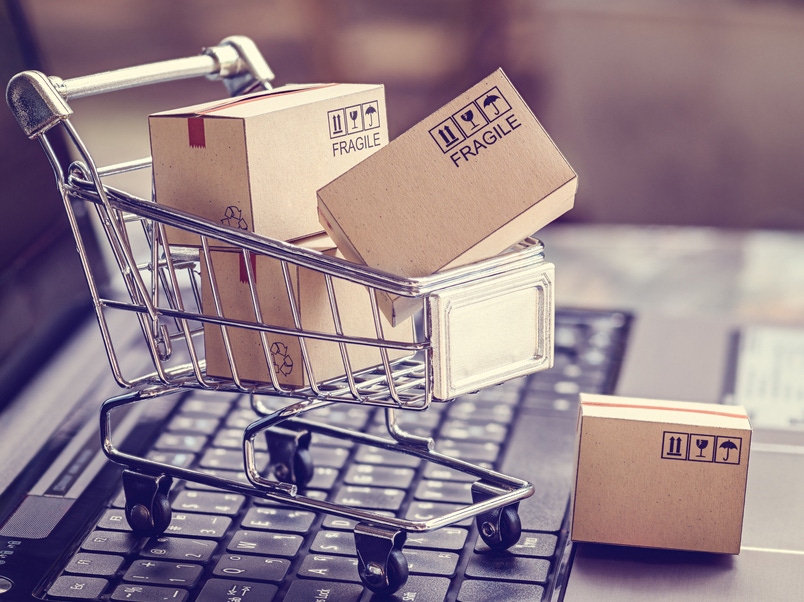With the growth of the e-commerce channel to get products from distribution points or retail outlets to consumers, brand owners need to rethink how they are packaging bottles and other containers for optimum protection.
March 12, 2018

 The old “pathway” of getting product from processors/manufacturers included a distribution channel that would deliver to the grocery/drug store or other retail outlet. The traditional secondary or tertiary package was the corrugated case or tray pack. Primary containers such as bottles were typically placed into partitioned shippers. Other product types, such as over-the-counter pharmaceuticals put bottles into folding cartons and then shippers. The goal was to transport 12- or 24-count cases, stacked on pallets and placed on trucks.
The old “pathway” of getting product from processors/manufacturers included a distribution channel that would deliver to the grocery/drug store or other retail outlet. The traditional secondary or tertiary package was the corrugated case or tray pack. Primary containers such as bottles were typically placed into partitioned shippers. Other product types, such as over-the-counter pharmaceuticals put bottles into folding cartons and then shippers. The goal was to transport 12- or 24-count cases, stacked on pallets and placed on trucks.
The combination of corrugated shippers, partitions and even folding cartons all acted in concert to withstand over road vibration and protect the product all the way to its intended destination.
EastPack 2018 highlights two industry mega-trends: smart manufacturing and 3D printing June 12-14 at the Jacob K. Javits Convention Center. There you’ll find the latest cobots, a dedicated 3D Printing Zone, hundreds of exhibitors and a 3-day packaging conference. For more information, visit the EastPack website. |
Now, the continued evolution of ecommerce is dramatically impacting how products are delivered. This means that packagers need to rethink their packaging choices. For example, instead of one or two dozen units being shipped in a case, consumers typically order single units. Depending on the product and the providers, each item may be put in a padded bag or in a small case with protective packaging.
Equally as important is the consideration that these items are no longer being shipped vertically. In the case of a liquid product, like a shampoo, for example, this can become problematic.
Brand owners need to consider every aspect of their package for suitability for ecommerce distribution. If you are shipping a liquid, are you using an induction seal or will a foam liner do a better job of minimizing back-off and preventing leakers?
 In the case of products using a folding carton to hold a primary container—such as a cosmetic or over-the counter (OTC) drug. Is the secondary folding carton necessary now that you are shipping in a padded mailer? Can you improve economics by removing that component?
In the case of products using a folding carton to hold a primary container—such as a cosmetic or over-the counter (OTC) drug. Is the secondary folding carton necessary now that you are shipping in a padded mailer? Can you improve economics by removing that component?
Consumers who purchase via e-commerce are also likely to want to express their purchasing satisfaction (or dissatisfaction) through online reviews or social media. It’s critical that your decisions are thought through so that you are not on the receiving end of negative feedback that can have significant impact on future purchases.
Additionally, many carriers and e-retailers are have guidelines for shipping liquid products and are imposing fines for non-compliance. Closely evaluating how your packaging stands up to this type of distribution, as well as the condition your package/product is in when the consumer receives it, will play a big role in your success.
Author: Thierry Fabozzi, president of Plastic Technologies, Inc. (PTI), is responsible for the company’s global operations. Fabozzi has a 30-year track record of significant packaging technology and business development achievements. Before joining PTI, he held positions at Nestlé, Milacron and Tetra Pak.
About PTI Global
PTI Global is recognized worldwide as a key source for preform and package design, package development, rapid prototyping, pre-production prototyping, and material evaluation engineering for the plastic packaging industry. For more information, visit www.pti-usa.com.
About the Author(s)
You May Also Like


